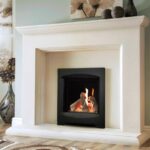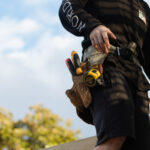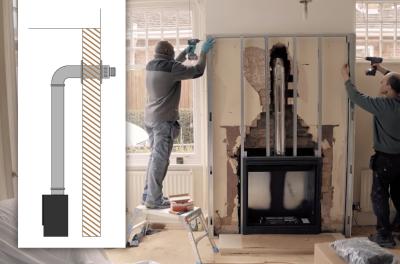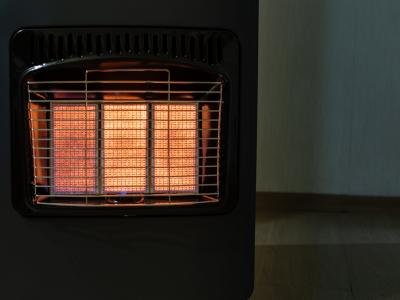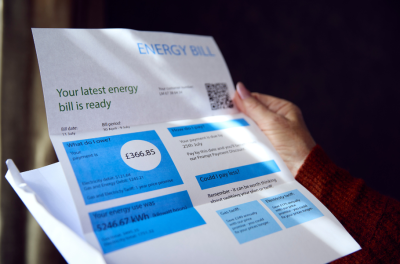We use cookies to improve your experience and our business. See our privacy/cookie policy or continue browsing to accept our use of cookies. View our cookie policy.
Can You Make An Existing Fireplace Larger?
The fireplace is usually the heart of a living space. The centre around which everything else revolves. It’s an important feature, which is why you should be happy with it. If you’re not happy with your current fireplace and you’ve decided you need to enlarge it, read on to find out everything you need to know about making an existing fireplace larger.
Before you start
We know that starting a new project can be exciting and you might be eager to get started, but there are few things you should do before you reach for your tools. Following the next few steps will make your life much easier in the long run and prevent any costly alterations further down the line.
What size is your current fireplace?
If you live in an older house your fireplace may have been ‘filled in’ over time in order to accommodate an electric or gas fire. Many properties built in the 18th and 19th centuries had fireplace openings that are much larger than those you see today.
If this is the case, then you’ll be able to enlarge your fireplace back to the original ‘recess’ (we’ll cover fireplace terminology later on). Enlarging your fireplace will involve little more than removing the brick/stone/rubble that somebody has filled the fireplace opening with.
But there are a number of things to bear in mind...
Will you need planning permission?
You won’t normally need to worry about planning permission (unless your property is listed in which case you should check). However, as the work involves your chimney and fireplace, it will be subject to Building Regulations.
Ensure you are familiar with Building Regulations
As we’ve just mentioned before you get stuck in, make sure you are familiar with the Building Regulations that apply to fireplaces. Because of the potential risks associated with fireplaces such as smoke and fumes, you will need to make sure that any work you are going to carry out complies with these regulations.
You will find these regulations in The Building Regulations 2010, Combustion appliances and fuel storage systems, Approved Document J which you can read here.
However, if you haven’t got the time or energy to read 89 pages of detailed regulations, we’ve summed up the key points to know, below.
Ensure you have sufficient ventilation
One of the key requirements within the Building Regulations is to ensure you have sufficient ventilation.
If you intend to fit a gas or solid fuel appliance in your newly enlarged fireplace, then you will be legally required to install air vents (if you don’t already have any). Insufficient ventilation can lead to combustion gases filling your living space, with potentially fatal results.
Depending on your property, there are different options for fitting vents.
If you have timber floors with a cavity beneath them, then you can fit vents in your floorboards. This is a discreet and tidy way of fitting vents and will allow your appliance to draw air from under the floor. This also has a secondary benefit of improving subfloor ventilation.
If that’s not an option for your home, then you can have vents fitted on an outside wall just above the skirting board. This is obviously a more disruptive and intrusive option, but a necessary one to keep you safe.
Ensure your chimney and flue are fit for purpose
Another aspect of Building Regulations that you’ll need to think about is your chimney and flue.
In order to comply with Building Regulations you will need to have your chimney and flue (if you have a flue) inspected. Whilst this is a mandatory requirement, it’s best practice to have your chimney inspected anyway - especially if you are going to the effort of enlarging your existing fireplace.
A thorough inspection will ensure your chimney is structurally sound, free of any blockages such as birds nests or fallen masonry and that it’s the correct size.
Other Building Regulations to know
As well as the points listed above, you will also need to consider things like updating the Notice Plate (this acts as a record of any changes made to a chimney or flue). It’s also mandatory to buy a carbon monoxide detector.

Building Regulations summarised
If we were to summarise all the regulations contained in the UK government’s Approved Document J, they would be as follows:
- Supply of air.
- Combustion by-product discharge and safe dispersal
- Providing correct and relevant information.
- Carbon monoxide warning.
- Protection against pollution.
- The protection of the building.
- Correct protection of liquid fuel storage systems.
If you’re worried about adhering to the Building Regulations, then use an experienced installer who will be able to check these things for you.
Depending on what type of fireplace you are installing, you should select the appropriate installer. For example, for gas fires or stoves you should use a Gas Safe registered installer. If you’re installing a wood burning or multi-fuel stove or fire you should use a HETAS registered installer.
Preparations for enlarging your fireplace
With those checks and research out of the way, you’ll be in a much more informed and confident position. In this section we’ll take you through the preparations you should take prior to starting work proper.
Preparing your fireplace
Like any form of construction work, enlarging a fireplace can be a messy job, so the first thing you should do is move as much furniture out of the way and cover everything in sight. You certainly don’t want brick dust or soot coating your belongings!
Preparing your neighbours
If you live in a semi-detached or terraced home with adjoining (or party) walls, you should let your neighbours know when you’ll be carrying out the work.
The main reason for doing this is the inevitable noise that the construction work will create. However, the work may also cause significant vibrations depending on the wall material. So, that could be something else to tell them about.

Get the right tools for the job
You’ll make the job much easier if you have the right tools for the job at hand.
For the average fireplace enlargement project, you’ll need the following things:
- A skip or area to store rubble and rubbish.
- An SDS-type drill with a chisel bit and hammer function (the more powerful the better. If you don’t want to buy one just for this job, you can hire one).
- A hammer and chisel if you don’t want to use a drill.
- Buckets for transporting bricks and rubble.
- Personal protection such as gloves and safety goggles.
- A torch so you can see into the dark recesses of the fireplace and chimney cavity.
Starting work on your fireplace
With all of the preparation out the way and your tools ready to go, it’s time to start the work itself.
But just before that, there is some fireplace terminology you should familiarise yourself with:
- The lintel - if you have a brick built chimney, it will almost certainly have a lintel. A lintel is a horizontal beam which sits along the top of your fireplace opening and supports your chimney. The lintel can be made of stone, brick, steel or concrete. Sometimes your fireplace may have a brick arch instead, however lintels are more common as they are easier to construct. The lintel provides structural support to your chimney, so if you intend to remove or change your lintel, ensure you have alternative support in place first such as acrow props.
- The jambs - these are the ‘legs’ that sit on either side of the fireplace opening. Like the lintel, the jambs provide structural support to the chimney, so you should be careful about interfering with these.
- The recess - this is the original structural opening of the chimney (also referred to as the builder’s opening). This is the original structural opening and marks the limit to which you can enlarge to - so don’t chip away at this!
Remove the existing fire
If you have an electric or gas fire that you need to remove first, make sure this is done safely.
In the case of gas fires you will need to contact a Gas Safe registered engineer to disconnect it from the gas supply and cap off the connection. It’s very important that the gas supply is safely disconnected before you do any further work.
Electric fires are generally a bit easier to remove, but as with anything electric ensure the electric is switched off in your property before you start work. If you’re unsure about removing an electric fire, contact a qualified professional.
Gas and electric fires are usually just appliances placed in front of, or within, small open fire apertures. Once you’ve removed the appliance the next big job will be excavation back to the original fireplace opening.
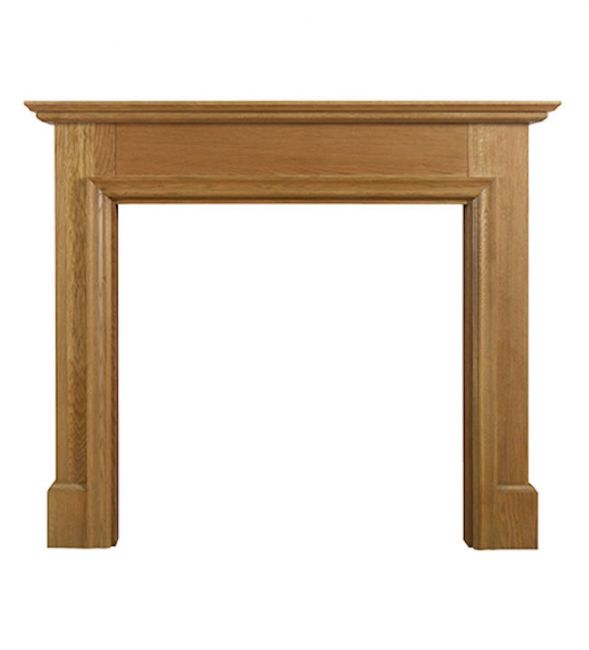
(Pictured: Cast Tec Coniston Solid Wooden Fire Surround).
Remove the fire surround
The next step is to remove the surround.
The most common method by which a fire surround is fixed in place is by fixing lugs. These are small brackets placed around the edge of the fire surround that are attached to the wall with screws. In the case of wooden fire surrounds, these are generally fixed to wooden battens attached to the wall.
The third most common form of fixing is brackets. Many modern fireplace surrounds use a hidden fireplace fitting bracket.
You can find out more about removing fire surrounds in our complete guide here.
A note on firebacks
If you have a small open fire and want to enlarge your fireplace, then there may be something else to remove in addition to the fire surround - a fireback.
A fireback is normally inserted into a fireplace opening to provide a shape suitable for an open fire. Firebacks are normally made of a lightweight material so a hammer and chisel can be used to remove it (unless it’s made of metal).
A note on back boilers
Again, if you currently have a small open fire and you’re looking to enlarge your fireplace, you may encounter a back boiler during the removal process.
A back boiler will typically look like a small metal shoebox. They sit at the rear of the flames and are connected by two pipes to a cylinder (which is normally located in the immersion cupboard).
You’ve got to be very careful when removing a back boiler, as any punctures or breakages will result in things getting very wet, very quickly. If you’re in any doubt, contact a plumber who will be able to help you disconnect and remove it.
Breaking through plaster
Once you’ve removed the fire surround (and firebacks and back boilers where applicable), the next step is to break through the plaster which covers the fireplace opening.
Using a hammer and chisel (or drill with hammer function) you should use the hearth as a guide to help you chip away at the correct parts of the fireplace. As the plaster begins to fall away you should see the original brick and mortar beneath.
It should become clearer, as the plaster is removed, how big the original fireplace opening was.
Excavating the fireplace opening
The difficulty and amount of work involved in the excavation stage will depend on how the fireplace was originally filled in.
Fireplace openings are most commonly bricked up, but don’t be surprised if you find rubble or stones filling the space instead. If you’re faced with bricks, get to work with a hammer to knock them out of place.
Keep going until you reach the jambs and lintel - and go no further!
Remember, these parts provide structural support to the chimney. If you want to enlarge your fireplace beyond the original opening, it’s best to consult a specialist builder as it can be a big, complex job.
Once you’ve reached the jambs and lintel, you’re nearly done!
Removing the old flue
If your old fire was gas and you are switching to an open, multi-fuel or other type of fire then you’ll want to remove the old flue.
Removing the old flue can be a big job, especially if your property is taller than a single storey. The flue will run right from the top to the bottom of your chimney, so removing it could involve scaffolding and working at height. If you’re not comfortable with this, consult a professional.
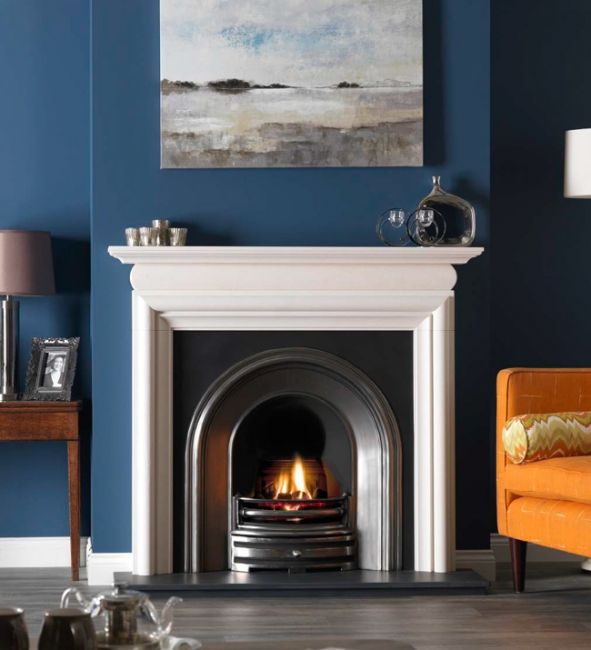
(Pictured: Asquith Agean Limestone Fireplace Package With Crown Cast Insert).
Inspect and test your chimney
Once you’ve finished excavating your fireplace out to the original opening size, it’s time to give the fireplace cavity, recess and chimney a thorough inspection.
This is a particularly important step if you intend your new fireplace to be an open one, burning solid fuels.
You should be looking for any cracks, especially to the jambs and lintel. Once you’re satisfied that your chimney is in good condition, you should perform a quick test. Hold a candle inside the recess and see if the smoke is being drawn upwards. If it is, then great! If not, you may want to speak to your local chimney sweep or chimney inspector for further advice.
That’s our at-a-glance guide to making an existing fireplace larger.
With your fireplace now larger, you will want to restore it. Look out for a future article from Direct Fireplaces on how to restore your fireplace.
Shop a wide range of fireplaces at Direct Fireplaces now.
More from the Direct Fireplaces blog…
Everything You Need to Know About Opening up an Old Fireplace | Finding A Qualified Fireplace Installer | Fireplace Chimneys - A Complete Guide
[related_products is_auto_added="1"]admin
Latest posts by admin (see all)
- Electric Fireplace Inserts Buying Guide - March 27, 2023
- What Types of Flueless Fires Are There? - February 23, 2023
- What Are the Best Contemporary Gas Fires? - January 17, 2023




